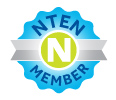So Netsquared picked their 21 projects for the conference [by Netsquared, I mean the registered users of the Netsquared site]. This is basically the first phase of selection. As for the $100K minimum to be distributed to projects, "The format for allocation will be determined by vote of Conference participants."
I think they are applying the wisdom of crowds at the wrong stage. It will work in this case because the Netsquared community is pretty homogeneous, but if you ever hit scale (10,000 projects), the popularity contest that is the first cut just doesn't make a lot of sense.
In a general sense, I would approach it in stages:
- Attract a bunch of applicants in an open process. Open, community process heavily reliant on networking and advertising.
- Qualify those applicants. Use the media volunteer approach to still let "lay people" do it, but at least you make sure the basic criteria is met. This is a binary, qualified or not decision. Qualified projects move forward.
- Review and select those applicants. Again, a media volunteer approach is perfect... anyone can participate-- you got the little "d" democratic going, but they have to think about the actual projects they are reviewing in a structured way, not just voting for favorites. A reviewer is assigned a project on a round robin basis, every project gets a score. Highest scoring projects move forward.

